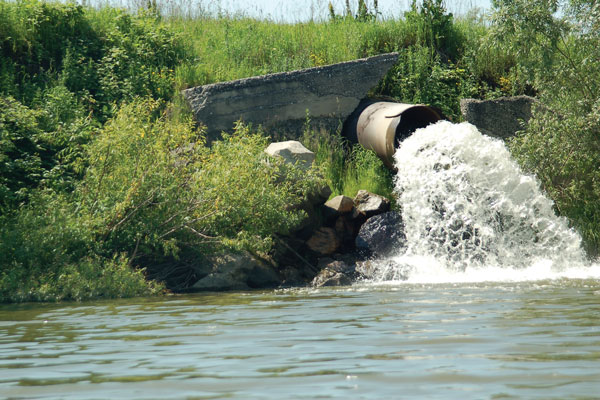Five Tips to Avoid Stormwater Headaches

Site work that results in stormwater runoff or erosion can expose a developer to potential liability.
STORMWATER MANAGEMENT is an essential part of real property development. Unfortunately, certain development activities can expose the developer to potential liability if the site work results in stormwater runoff, erosion or sedimentation that impacts a neighboring property, despite the implementation of runoff controls.
In many jurisdictions, owners are liable for a nuisance condition on neighboring property, even if that condition is the result of professional negligence by the engineer or contractor. Time and again, developers are surprised to discover that they have exposure for a neighboring landowner’s damage claim even though the site design was prepared by an engineer and approved by the local permitting authority.
Even more surprising is that the developer’s potential liability to neighboring property owners can continue long after construction is finished and the property has been sold to a third party.
Recently, a regional retail developer faced a lawsuit related to a shopping center north of Atlanta. The developer purchased acreage in the mid-2000s and developed a 300,000-square-foot retail center, which it then sold within two years. In 2014, the developer was sued by downstream property owners who alleged that defects in the stormwater management system, which was included in the transfer of ownership at the time of sale, caused or contributed to property damage downstream. Because the neighbors claimed the development resulted in a continuing trespass of stormwater and sediment onto their property, the claims could not be dismissed short of trial or settlement. The matter was settled only after extensive expert discovery on the eve of trial.
Such risks exist in any development that modifies existing stormwater runoff patterns on the property, including redevelopment. In another recent case, a national retailer was sued by adjoining property owners after redeveloping a one-acre parcel into a retail store in central Georgia. A drainage swale, part of the local municipality’s stormwater management system, ran between the client’s property and adjoining property owners’ land and regularly overtopped during storms. The neighbors alleged that, before the redevelopment, both the developer’s property and the neighbors’ properties were flooded when the swale overtopped. The redevelopment added stormwater management infrastructure that resulted in a net decrease in impervious surface after new landscaping was added.

Developers may have exposure for defects in construction, like this damaged headwall at a discharge point, that result in damage to downstream property owners.
The redevelopment also raised the elevation of the site. The adjoining property owners argued that the design caused the overflow from the swale to be directed only to the neighbors’ properties, so that flooding increased when the overtopping occurred. Again, this matter was settled only after extensive expert discovery.
In many jurisdictions, even where neighboring property has sustained little or no actual damage as a result of runoff from upstream development, claimants are entitled to recover for the loss of “use and enjoyment” of their property. This can expose the developer to damages well beyond the typical limited actual damages a neighbor incurs because of runoff. A developer also can be exposed to punitive damages and claims for the neighbor’s attorneys’ fees for allowing runoff to continue after the developer becomes aware of it, even if the developer has undertaken efforts to correct the condition. Such damages create a significant risk for developers.
How can a developer recognize potential liability and minimize risk? Consider the following tips:
1) Review your commercial general liability and professional liability coverage. Professional liability insurance for developers may cover conduct that is often at issue in these cases. That conduct includes a) the management, coordination and supervision of design and construction and b) the identification and acquisition of applicable permits, variances, consents, easements and other rights.
2) Review your consultant contracts. Make sure your construction and consultant contracts require your contractor and engineer to indemnify and defend you, and do not agree to limit the indemnification obligation to the contract price.
3) Become familiar with neighboring properties during due diligence. Look for potential uses that may be particularly sensitive to the impacts of stormwater, erosion and sediment control, such as ponds and streams. Confirm that your consultants have noted these as well, so that they can be accounted for in the site design and construction, if necessary.
4) Delegate responsibility for implementing all stormwater design elements. Stormwater management plans often include specific requirements that continue after construction is complete, such as sweeping parking lots daily, maintaining filters and recording use restrictions. Make sure that requirements for the stormwater management plan are properly implemented and that a mechanism is put in place to ensure compliance.
5) Establish a protocol for addressing neighbors’ complaints during construction. A key component in establishing liability for punitive damages and attorneys’ fees in stormwater cases involves demonstrating that the owner of the developed property ignored or failed to adequately respond to neighbors’ complaints about damage to their property. A developer’s statement, such as, “I thought someone else was responsible,” will not be well received by a jury — especially in the context of a lucrative commercial development that is negatively impacting a neighboring residential property. Make sure that clear lines of responsibility are established for responding to complaints, and that you, as the developer, are kept in the loop.
Issues arising from stormwater runoff can be tricky and can present substantial risk for developers. To limit exposure, you must identify and monitor potential impacts on neighboring properties and ensure that your team is responding to issues in a timely and effective manner.
Sam Arden, Peyton Nunez and Irene Vander Els, attorneys, Hartman Simons & Wood LLP




